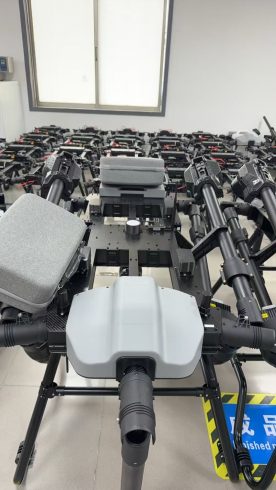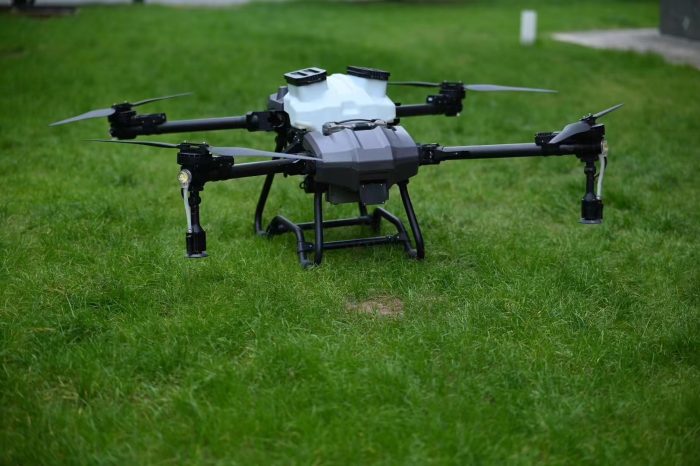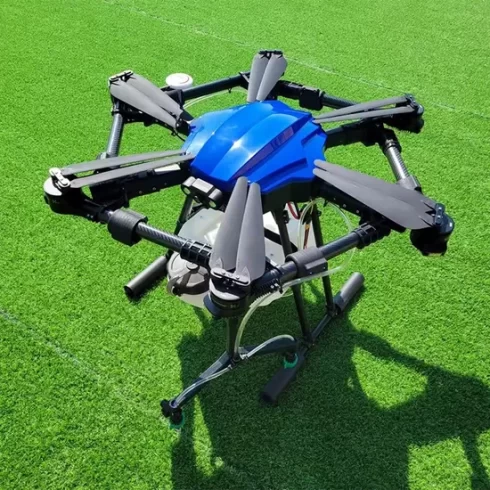![图片[1]-Drone Sprayers for Rice Fields: Precision, Efficiency, and Sustainability in Modern Agriculture-msoen](https://www.msoen.com/wp-content/uploads/2025/04/4e0da2d332214638-768x1024.jpg)
Rice cultivation, a cornerstone of global food security, faces escalating challenges such as labor shortages, rising input costs, and environmental concerns. Traditional methods of pesticide and fertilizer application in flooded rice paddies are time-consuming, inefficient, and prone to overuse. Enter drone sprayers for rice fields—a transformative solution that combines cutting-edge technology with agricultural expertise to address these challenges head-on. This article explores how drones are revolutionizing rice farming, their unique features, and the benefits they deliver to farmers worldwide.
Why Rice Fields Need Drone Sprayers
Rice paddies are inherently challenging environments for conventional machinery. Flooding, uneven terrain, and dense crop canopies limit the use of tractors or handheld sprayers. Manual spraying exposes workers to harmful chemicals and is slow, especially during critical growth stages. Drones offer a scalable, safe, and eco-friendly alternative:
- Accessibility: Navigate flooded fields and uneven surfaces effortlessly.
- Speed: Cover hectares in minutes instead of hours.
- Precision: Target specific areas to minimize chemical waste.
Key Features of Rice-Optimized Drone Sprayers
- Adaptation to Wet and Uneven Terrain
Rice fields are often waterlogged, requiring drones with:
- Waterproof Components: Protect motors and electronics from moisture.
- Obstacle Avoidance: Sensors detect paddy ridges, water channels, and vegetation to prevent collisions.
- Low-Altitude Flight Stability: Hovering capabilities at 1–3 meters ensure even coverage in dense, low-canopy rice paddies.
- Customized Spraying Systems
- Adjustable Nozzles: Switch between wide-angle sprays for large areas and focused streams for pest hotspots.
- Variable Rate Control: Sync spray output with real-time data on crop health or infestation levels.
- Anti-Drift Technology: Air-assisted nozzles reduce mist drift, preventing chemical runoff into waterways.
- AI-Powered Precision Agriculture
Modern drones integrate AI to enhance decision-making:
- Pest and Disease Detection: Multispectral cameras identify early signs of rice blast or insect damage.
- Variable Rate Mapping: Algorithms prescribe optimal spray zones based on NDVI or thermal imagery.
- Swarm Coordination: Multiple drones collaborate to treat large fields autonomously.
- Extended Flight Time and Battery Life
Rice farming often requires consecutive days of spraying. Drones with:
- 80–100 Minute Flight Time: Complete 5–10 hectares per charge.
- Fast-Swap Battery Packs: Minimize downtime during critical growth phases.
- Solar Charging Options: For remote fields with limited power access.
Benefits of Drone Sprayers in Rice Farming
- Reduced Chemical Usage
By targeting only affected areas, drones cut pesticide use by 30–50%, lowering costs and environmental impact. - Labor Efficiency
Replace manual crews with drone operators, saving time and reducing health risks from chemical exposure. - Higher Yields
Timely, precise interventions protect crops from pests and diseases, boosting yields by up to 20%. - Compliance and Sustainability
- Meet strict regulations on chemical runoff and water quality.
- Align with global sustainability goals (e.g., UN SDG 12: Responsible Consumption).
Application Scenarios in Rice Cultivation
- Early Growth Stages
Monitor seedling health and apply starter fertilizers uniformly across flooded fields. - Vegetative Phase
Target foliar diseases like sheath blight with AI-detected hotspots. - Pre-Harvest
Control weeds and pests without damaging maturing rice stalks.
Future Trends in Rice Drone Technology
- Hydrogen Fuel Cells: Extend flight times to 3+ hours for marathon spraying sessions.
- Underwater Drones: Monitor submerged rice paddies for root health and algae blooms.
- Blockchain Integration: Track chemical usage and harvest quality for premium market access.
Implementing Drone Sprayers: A Checklist
- Assess field size, flooding frequency, and crop rotation practices.
- Choose drones with waterproofing, obstacle avoidance, and AI analytics.
- Train operators on software for geo-fencing and variable-rate spraying.
- Partner with local regulators to ensure compliance with pesticide guidelines.
Conclusion
Drone sprayers are redefining rice farming by merging precision agriculture with environmental stewardship. As global demand for rice grows, these technologies empower farmers to meet production challenges while conserving resources. For rice-growing regions, adopting drone sprayers isn’t just a choice—it’s a strategic imperative to ensure food security and profitability in a rapidly evolving world.
Key Takeaways:
- Rice-specific drones excel in wet, uneven terrain with waterproofing and obstacle navigation.
- AI-driven features optimize chemical use, reduce labor, and boost yields.
- Future innovations like hydrogen fuel cells will further enhance scalability.
Investing in drone sprayers for rice fields is a leap toward smarter, sustainable agriculture—one where every drop of pesticide and every grain of rice is optimized for maximum impact.









暂无评论内容